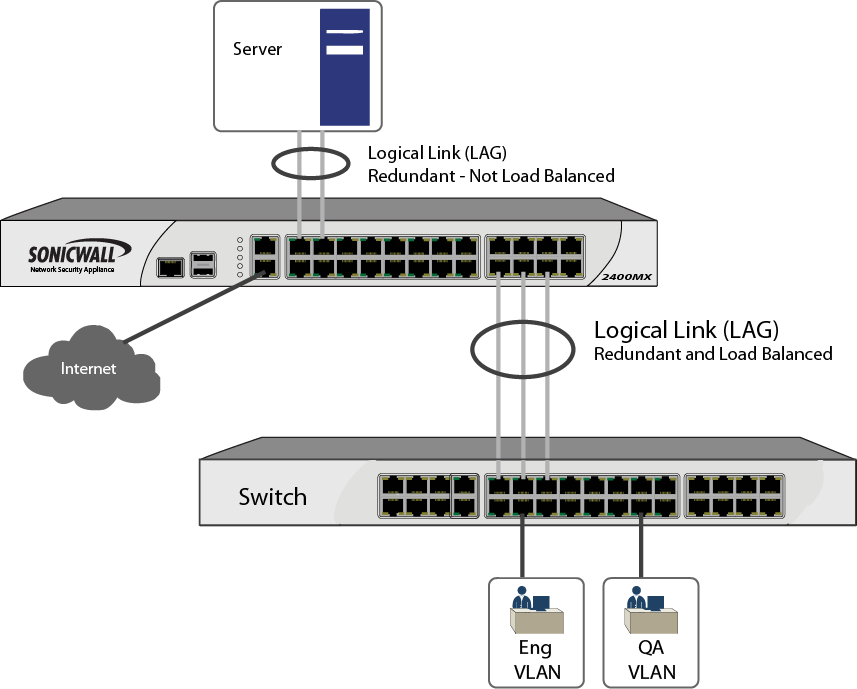
Two main types of usage are enabled by this feature:
|
•
|
NSA 2400MX to Server – This is implemented by enabling Link Aggregation on ports within the same VLAN (same PortShield Group). This configuration allows port redundancy, but does not support load balancing in the NSA 2400MX-to-Server direction due to a hardware limitation on the NSA 2400MX.
|
|
•
|
NSA 2400MX to Switch – This is allowed by enabling Link Aggregation on VLAN trunk ports. Load balancing is automatically performed by the hardware. The NSA 2400MX supports one load balancing algorithm based on source and destination MAC address pairs.
|
Sample Logical Link (LAG) Configuration shows LAGs to a server and to a switch:
Sample Logical Link (LAG) Configuration